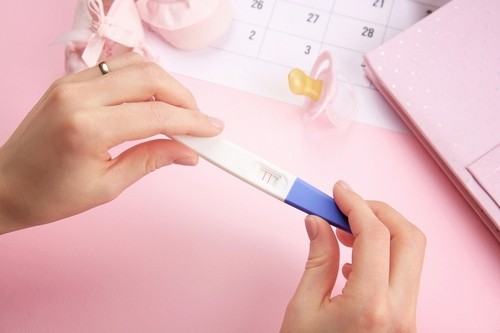For many years, the Mantoux test with tuberculin is a widespread research method that helps to detect the entry of tuberculosis antigens into the body.
The reaction is carried out to diagnose pathology, evaluate the effectiveness of treatment, as well as before BCG revaccination. This type of study is also called tuberculin breakdown due to the use of extracts from mycobacteria – pathogens.
Today, tuberculosis is widespread. Cases of the disease occur in all countries of the world, while the pathogen affects people of all age groups. Pathology can be asymptomatic for a very long time, so timely diagnosis is very important, especially in children.
What is the research done for?
Mantoux test is carried out for children in order to diagnose tuberculosis, which affects not only the lungs, but also other organs and systems. The study consists in the introduction into the body of small doses of mycobacterium antigens by the intradermal route in the middle third of the forearm.
At this point, T-lymphocytes accumulate, forming a small seal. If it is large, this means that the body actively interacts with the pathogen, and in this case, an additional clinical examination is required.
Sample schedule
Many parents are interested in whether this is a vaccine or not, because the Mantoux reaction is the introduction of pathogens into the children’s body. Health professionals say this is a kind of immunological test that has nothing to do with vaccination. However, due to the introduction of mycobacterial antigens, some experts believe that the Mantoux test can be considered a vaccine, about which parents should know everything, starting with the schedule.
When compiling it, the following factors are taken into account:
- The first Mantoux reaction is set at 1 year, and then every 12 months until the end of the teenage period.
- Be sure to look at the vaccination calendar: an immunological test is carried out before vaccination, or 1-2 months after it. This is due to the possible occurrence of body responses, as well as the wrong result of the sample.
- If the child is not vaccinated with BCG, the first Mantoux is given per year, and then every 6 months, taking into account the vaccination schedule.
- Before conducting a tuberculin reaction, find out if there are any contraindications.

A Mantoux test for the detection of tuberculosis is placed in a clinic. This is done by specially trained medical personnel. Parents must be told about possible side effects, allergies, and what to do if complications arise.
Evaluation of the results
Assessment of the results of the Mantoux test in children is carried out on day 3 (72 hours) after the formulation of the reaction. At the injection site of tuberculin, a seal is formed, surrounded by redness. Using a transparent ruler, only the papule is measured, but not the area of hyperemia. After determining the amount of compaction, an assessment of the result of the Mantoux test in children is performed.
| Result | Papule sizes |
| Negative | Missing, or 1 mm |
| Doubtful | 2 to 4 mm |
Positive:
|
|
| Hyperergic | More than 17 mm |
When stating Mantoux, the medical worker must explain to mom what papule is and how to check its size yourself. This will help parents detect complications or allergies if they occur.
There is also a turn of a tuberculin test – this is the appearance of a positive Mantoux reaction after previous negative ones. Often found in children under 5 years of age and indicates infection or a predisposition to pathology.

It is worth noting that the size of the Mantoux in vaccinated children per year is somewhat different from those at an older age. This is due to the recent introduction of BCG vaccine and the active development of the body’s immunity. Over the years, the size of the papule gradually changes.
| Post vaccination time | The amount of scar after BCG | Tuberculin Papule Size | ||
| Norm | Reason not found | Infection | ||
| Year | From 6 mm | Up to 15 mm | 16-17 mm | 18 and more mm |
| 1-3 mm | Up to 12 mm | 13-15 mm | 16 and more mm | |
| Missing | Up to 10 mm | 11-14 mm | 15 and more mm | |
The doctor will explain to the mother what the Mantoux should be for the child per year, so that the parents do not have concerns. As early as 2 years, the size of the scar after vaccination does not affect the tuberculin papule. However, it can remain as high as 1–1.5 cm. At 3 years, the size of the seal decreases slightly, and at 5 years it approaches normal, as in adults.
Papule enlargement: possible causes
Having learned what the size of the Mantoux test should be for a child, parents are often interested in what changes in size may indicate. It is worth noting that a positive reaction is not always a pathology.
The main causes of a large Mantoux papule in a child are:
- Mycobacterial infection.
- Recent immunization with BCG vaccine.
- The predisposition of the body to the development of tuberculosis.
- Improper care or allergies.
- Failure by medical personnel to administer tuberculin, an expired drug.
Mantoux test standards show that in some cases hyperemia without papules is possible. This result is assessed as negative, requiring BCG revaccination.
Papule Care
It is important for mothers and fathers not only to know why they put the Mantoux reaction, but also how to properly care for the injection site of tuberculin. It matters in evaluating the results.

Typically, the rules for caring for a papule are told in the office of the clinic when they put a test:
- The place of the resulting seal cannot be wetted with water or washed with soapy water.
- It is forbidden to grease with brilliant green, peroxide, iodine and other means.
- Often on the second or third day after a Mantoux vaccination, children complain that the injection site is itching or sore. Therefore, it is very important to ensure that the child does not touch the papule, as this can lead to serious consequences.
- Do not stick the injection site of tuberculin with a patch, even if a crust has formed there.
It is important to remember that due to poor Mantoux care, a child may experience complications or difficulties in diagnosis. Therefore, it is necessary to adhere to the recommendations of the doctor.
Vaccination contraindications
There are a number of cases when it is impossible to pose a reaction, since there is a risk of irreversible consequences. Contraindications to the Mantoux test are the following situations:
- The presence of pustular lesions of the skin of any localization.
- If the child is sick, or any chronic infection has worsened.
- Lesions of the nervous system, for example, epilepsy.
- Vaccination in the last month.
- Elevated body temperature of unclear etiology.
Mantoux vaccination in the presence of contraindications can cause false abnormalities in children. Therefore, you should carefully monitor the health of the child, and if there are symptoms of pathology, postpone the study until they disappear completely.
Should I get scared of a positive reaction?
Many parents, having heard the phrase “positive reaction”, begin to worry that their baby has tuberculosis. But this is a false assumption. Normally, the size of the Mantoux test in a child should be up to 5 mm. This indicates the absence of infection and a predisposition to the disease. If the papule of Mantoux in a child reaches 10-15 mm, this may indicate the organization of improper care, the mistakes of medical personnel in setting up a tuberculin test, and a tendency to allergies.

Infection can be suspected with a seal size of more than 1.7-1.8 cm, while the doctor determines after how long it is necessary to conduct a repeated Mantoux, which specialists to visit and where, if necessary, to take a radiography. But if the previous samples were normal, then the increase in compaction is not a cause for concern.
Sometimes parents complain about a too small papule after Mantoux or its complete absence. In this case, BCG revaccination is prescribed.
Side effects
Often after the test, especially if this is the first Mantoux, mothers and fathers are afraid of all kinds of adverse reactions from the child’s body. Parents are interested in whether there can be an allergy, and how to reduce the risk of its occurrence. Any manifestations occur when the rules for the introduction of tuberculin are not observed, neglect of safety measures, ignoring contraindications. Side effects are expressed by the following symptoms:
- Fever.
- The appearance on the skin of a rash, redness, peeling.
- Lethargy, apathy, drowsiness.
- Decreased appetite.
As a rule, manifestations disappear on their own after 1-3 days. However, with significant deviations, it is worth contacting a doctor for the necessary recommendations.
Complications after the test
Having found out what the Mantoux vaccine is, parents need to know about possible complications: this plays an important role in maintaining children’s health. Severe consequences arise mainly due to weakness of the body or non-compliance by medical personnel with all standards.
Complications after an immune test include:
- Allergic reactions, manifested by a change in the skin, difficulty breathing, impaired heart function.
- The poor health of the child after the Mantoux test – vomiting, loss of consciousness, cramps, fever.
- An ulceration of the papule, the release of pus from it.
- Hemorrhages at the injection site of tuberculin. In this case, the Mantoux reaction can be blue or purple.
- Tissue necrosis.
It is important for parents to know what a papule should look like after a Mantoux test. This is necessary for the timely detection of complications and adverse reactions. If any pathological symptoms are identified, you should contact the hospital as soon as possible.
Conducting an immunological test for the detection of tuberculosis is an integral part of the research of the child’s body. And knowing how to check for pathology using the Mantoux reaction, as evidenced by the results, and how to measure the papule, helps moms and dads find answers to many questions. All this is important for maintaining the health of the child, because a mother who knows all the norms will notice even the slightest deviations in time, taking care of the provision of timely assistance.



